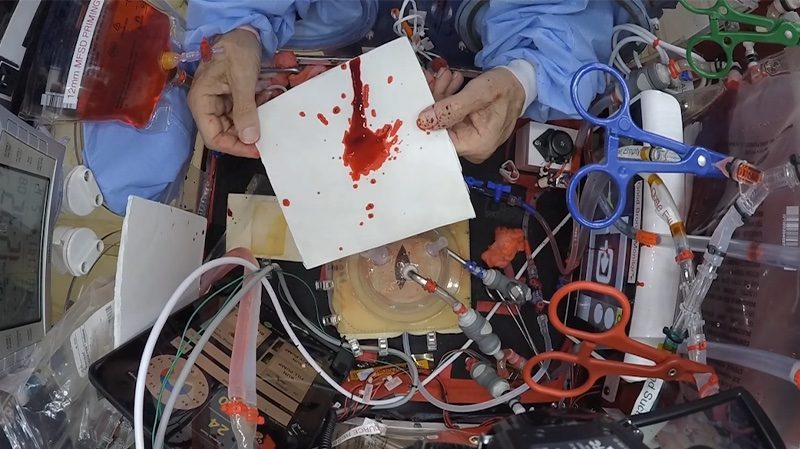Sex, condoms, and STDs: CDC warns about teen risk behaviors

It’s a well-worn truism that teenagers take risks—whether its drugs, drinking, shoplifting, or drag racing down the L.A. River against their 30-year-old gang rivals. On the flip side of that truism, parents worry endlessly that those risks will result in life-altering consequences. And there’s perhaps no risk more fraught with worry than when and how teenagers will become sexually active.
Boys and girls begin puberty early in their teens, an age established during our 200,000-year evolutionary history. Yet, this time frame is horribly mismatched with modern cultures and societies. Today’s teenagers reach psychosocial maturity much later and build life plans centered on long-term education and career goals. Thankfully, in the 20th century we developed safe, effective contraceptives and prophylactics, granting us a chance to find harmony between our modern realities and evolutionary drives.
But do teenagers engage in safe sex, or are they taking unnecessary risks during their first sexual escapades? That’s the question the CDC hopes to answer with its Youth Risk Behavior Surveillance System. This biennial, nationwide survey aims to monitor health-related risk behaviors among high school students. And when it comes to sex, the survey’s findings are both promising and a tad terrifying.

A graph showing the prevalence of condom and primary contraceptive use among high school students during their last sex act.(Photo: CDC)
First some good news: About 90 percent of sexually active high school students report using either a condom or other primary contraceptive method. Condoms were the most used form of contraceptive, with about half of that cohort claiming to have used one during their previous act of intercourse. Sexually active students made up about a quarter of all respondents, meaning more adolescents are choosing to wait until at least their late teens to have sex.
Looking at long-term data, today’s teenagers make better decisions than their ’90s peers. When the survey began in 1991, more than 50 percent of respondents claimed to have engaged in sex at least once. Of those, 16 percent said they used no method of birth control while 10 percent said they had sex before the age of thirteen. In 2019, 38 percent of respondents claimed to have had sex at least once. Of those, only 12 said they used no birth control while 3 percent said they had sex before thirteen.
Overall, the CDC reports adolescence to be a healthy stage in people’s lives.
Now for some bad news: Condom use among sexually active teens has decreased. While 2019’s 54 percent represents an uptick from the 1990’s, it is a headlong drop from 2003’s high of 63 percent. Granted, condom use may be underestimated due to survey limitations. For example, respondents could only select one birth control method for their latest sexual act. This means they could have considered another method as their primary birth control while leaving condom use unaccounted for. Even so, 2019’s tally still suggests too many teenagers take unnecessary risks with pregnancy and STD transmission.
Other troubling figures also emerged. About a fifth of sexually active teens report using either no contraception or using a highly ineffective method, such as withdrawal. Only 9 percent report pairing an effective birth control with a condom. That figure may also be underestimated as half of the respondents were teenage boys, who—let’s face it—may not have the most reliable grasp on female contraception use.
Teenagers and people in their early 20s represent about half of the 20 million new cases of STDs each year in the U.S. So, while 90 percent of sexually active teenagers may be protecting themselves from unintended pregnancies, many still risk their health in other ways. This is why experts recommend teens pair a condom with an effective birth control. It provides extra protection from unintended pregnancy while adding a prophylactic element to hinder the spread of STDs.
Bill Nye: Can We Stop Telling Women What to Do With Their Bodies? | Big Thinkwww.youtube.com
What can be done to bolster positive trends and reverse negative ones? Continue advancing sex education and outreach programs. In the survey, the CDC notes the proven effectiveness of risk reduction education—that is, not fearmongering but comprehensive, evidence-based teaching.
Unfortunately for adults hoping to avoid awkward conversations with banana stand-ins, this means doing away with abstinence-only programs. A review of the scientific literature found that these programs contain “scientifically inaccurate information, distort[ed] data on topics such as condom efficacy, and [promotion] of gender stereotypes.” It concluded that abstinence-only programs put teens at greater risk of unintended pregnancies and STDs. With the gap between sexual maturity and marriage ever-widening, such programs, no matter how well-intended, are simply unrealistic.
As Laura Grubb, author of the American Academy of Pediatrics guidelines on adolescent barrier protection, told CNN:
It does not have to be a controversial position. There is no evidence that providing contraception to adolescents makes them more sexually active or promotes risky behavior. […] In fact, comprehensive evidence-based sexuality education results in adolescents delaying sexual behavior, using contraception at first intercourse, and having less sexual partners at a young age.”
The CDC also recommends strong partnerships between communities and clinics. Teens should have access to well-trained care providers to provide the information and services they need.
Sex comes with risks, and it is impossible to reduce a teen’s risk factor to zero. That’s not necessarily a bad thing. Risk-taking is how teenagers develop their independence and form the identities that will carry over into their adult lives. It helps them experience qualities of the world that were hidden to them as children. But without comprehensive education, the consequences of those risks may stay hidden until it’s too late. And without access to proper outreach and resources, they may not have the means to mitigate those risks.
As for drugs, drinking, shoplifting, and drag racing down the L.A. river for pinks, those are topics for other surveys and articles.





